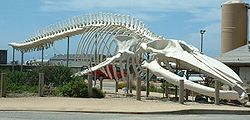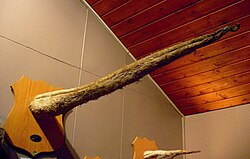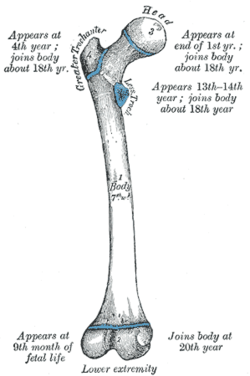
The largest body part is either the largest given body part across all living and extinct organisms or the largest example of a body part within an existing species. The largest animals on the planet are not the only ones to have large body parts, with some smaller animals actually having one particularly enlarged area of the body.
Contents
- Blue whale
- Other animals
- In proportion to body size
- Humans
- Individual human records
- Extinct animals
- See also
- References
Furthermore, there are two kinds of body parts described in this article. Absolute largest, and largest in relation to its body size. This distinction is critical in evolutionary biology, as traits like the extremely long tail feathers of the ribbon-tailed astrapia (Astrapia mayeri), which are the longest in relation to body size of any bird, are often the result of intense sexual selection. [1]


